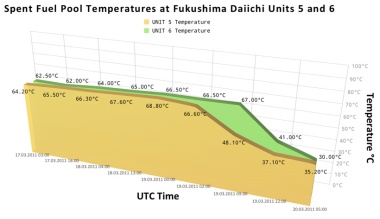Obama to US: Energy Starvation is for Your Own Good!
All of the press conferences and television appearances may say, “We want cheap energy,” but actions speak louder than words. We’ve heard the words. What do their actions say? Why are they killing energy? _EnergyTrib
US Energy Secretary Steven Chu vows that the Obama administration is working hard to "take the pain out of high gasoline prices." Yet across the energy spectrum, the documented actions [not words] of the Obama group displays a broad policy of "energy starvation," or progressive energy shutdown.
Banning deep-water drilling in the Gulf is probably the most well known energy-killer. Immediately after the BP spill, Obama issued a moratorium that prevented potential oil production. The ban, originally thrown out by a US District Judge, expired November 30th, 2010, but virtually no permits have been issued since—creating a de facto ban. On February 17th, the same judge ordered the Interior Department to act quickly on offshore drilling applications—calling the inaction "increasingly inexcusable." Not only have gas prices gone up as a result, jobs have been lost and businesses have gone bankrupt.But this is just barely scraping the surface. A deeper look into the Obama EPA, DOI, DOE, NRC etc. would reveal top level government agencies full of ideologues, dedicated to the green ideals of reducing the human footprint on the Earth by any means necessary -- including poverty-inducing energy starvation. Everything these zealots do in the name of faux environmental hysteria has the full power of the US government behind it.
Onshore, the administration uses land designations to block oil and gas exploration and extraction. Right now the Dunes Sage Brush Lizard is threatening the entire economy of Southeastern New Mexico. The Fish and Wildlife Service has nominated the oil-rich region as critical habitat for the critter. Nearly a year ago, a Department of the Interior (DOI) list of “good candidates for National Monument designation under the Antiquities Act” was made public. Of the suggested locations, roughly half had known energy resources—to which the President can unilaterally restrict access through a National Monument designation. Additionally, in December of 2010, Interior Secretary Salazar circumvented Congress’s authority by creating a new designation: “Wild Lands”—which locks up lands without US citizens having a voice through our elected officials.
The “actions” are not just about oil and gas.
In late 2009, non-elected bureaucrats in the Environmental Protection Agency (EPA) revoked a coal-mining permit in West Virginia issued to Arch Coal in 2007. Not only did the regulatory action stall the development of domestic energy, it hurts the American economy at time when we most need the jobs. The EPA is also tightening regulations that make coal-fueled electricity more expensive.
Despite Chu and Obama insisting they support nuclear power, actions suggest otherwise. While campaigning, Obama promised to shut down Yucca Mountain in Nevada—which was done in mid 2009. Without long-term storage of so-called nuclear “waste,” the administration will not allow any new nuclear power plants. Plus, the process is so prohibitive that no nuclear plant permits have been issued since Obama’s election. If nuclear power was a priority, plant construction that they say takes ten years, according to experts, could be done in half the time.
Nuclear power requires a source fuel: uranium—a mineral abundant in the US. But DOI and EPA actions bar new uranium mining in Arizona. The first new uranium mill in twenty-five years has been approved in Colorado, but construction, energy and jobs are being stalled by the EPA.
Not even renewable energy is immune. A new study reveals that 351 proposed energy projects in 49 states have been “delayed or cancelled” due to activism, permitting and “a system that allows for limitless lawsuits.” Of these, the study found that “almost half” are renewable energy projects.
Renewables, such as wind and solar, require vast quantities of metals and minerals. Yet, these, too, face regulatory barriers. A foreign company proposed to bring money into Montana’s economy by further drilling on a known deposit of tungsten—essential for steel (each wind turbine requires 335 tons of steel). The Forest Service would approve the permit if done with mules and pick axes instead of the modern equipment used there thirty-years ago.
_EnergyTribune
Politicians always say one thing and do another. And it is not impossible that Mr. Obama truly does feel the pain of those many Americans who suffer under his rule. As he twists the cold, sharp knife of energy starvation ever deeper....
More: If the US is to start building much-needed small modular nuclear reactors by the year 2020, they cannot delay. And Obama's NRC chief Jaczko is digging in his heels in order to delay development of newer, safer reactor designs -- even more so since the Japanese earthquake, tsunami, and Fukushima nuclear reactor incident.
If ever there is a time to promote new, safer nuclear energy, it is now. Unless your intention has been to stall and starve energy development all along.
Labels: energy starvation, Obama














